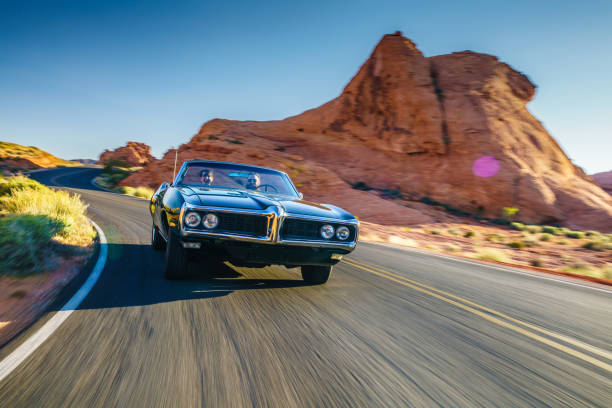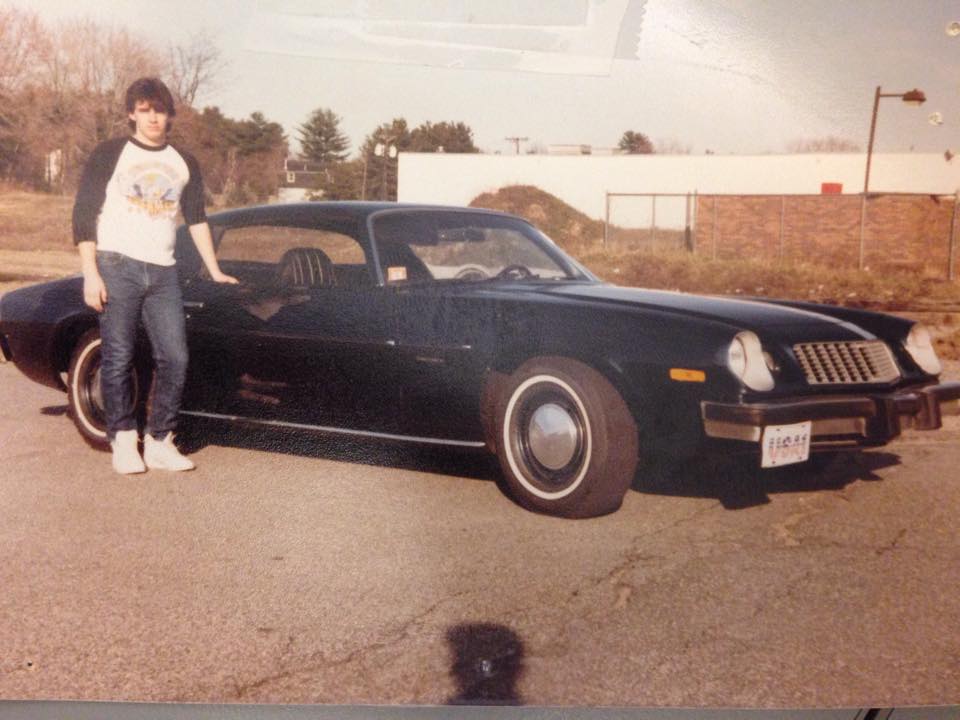This is an addendum to the Precious Metals story the other day; I thought it was worth going into the subject more deeply because of the interest in it expressed by many – and th questions they have. Here are some answers – and if you have more questions, please ask them!
. . .
If you like what you’ve found here please consider supporting EPautos.
We depend on you to keep the wheels turning!
Our donate button is here.
If you prefer not to use PayPal, our mailing address is:
EPautos
721 Hummingbird Lane SE
Copper Hill, VA 24079
PS: Get an EPautos magnet or sticker or coaster in return for a $20 or more one-time donation or a $10 or more monthly recurring donation. (Please be sure to tell us you want a magnet or sticker or coaster – and also, provide an address, so we know where to mail the thing!)
If you like items like the Keeeeeeev T shirt pictured below, you can find that and more at the EPautos store!











Sure they’re until they nickle and dime you to death then find another older car with lower mileage to drive..Depends what older is to you..15 year old cars make good daily drivers..The last 15 years I drove new vehicles(up to 5 years old),but the way vehicles are going older rides will be my main vehicles again,not buying electric or a $90,000 twin turbo 4 or 6 cyl average ride..Nope!
I even daily drive 1960’s and 1970’s Chrysler products and those are reliable I never needed a tow and at one time drove those 60 miles round trip per day for 15 years! Even today I drive them when/where I want to with no issue..People that have issues dont drive them often or far,they leave them parked for months then drive them and have issues then complain lol.
I take my old cars out all the time and they drive,handle and do everything a new car can do..With Chrysler products you can adjust the front torsion bars in 5 minutes to lower ior raise them..I lower them a couple inches and handling greatly improves,along with min of 225 – 235 wide tires all around also help handling..People cant believe how good my cars handle..and perform..My 4 second range is very quick especially with no traction control and tires will spin forever even from a 20 mph roll.I did get 3.8 sec out of my old Charger 440 and low 12’s in the 1/4 thats quick enough and done with tiny for today 235/70 series 15 inch tires! I own a Hellcat Challenger and you have just as much fun in either car but the driving experience is better in the old 68 Charger…I love how old cars drive and feel,truly awesome.
Hi Mr. A –
Yup. I own a slightly modified ’76 Trans-Am. The suspension is mostly stock except for larger sway bars and poly bushings, plus a set of 245/60-15 tires. The car handles (and brakes) remarkably well, even though it is almost 50 years old. It’s not as quick, perhaps, as a new Mustang GT – but it’s close – and it’s more fun because it feels more visceral and real, which I attribute to the uncorked, carbureted 455 and the absence of any “advanced driver assistance technologies”!
I had a 2003 Ford Escape that I bought new. 3.0L V6, AWD, 4 speed automatic, tow package. I cannot enough good things about it. I traded it in b/c I could not smog in CA. It had three two catalytic converters, two of which needed to be replaced. Going very strong at 200K. The one on sale here is the same year, nicer, $5K with 120K miles. Need to see how available parts are, but the one I had was extremely reliable. That is a candidate for a daily driver.
We still have our 2003 Escape V6, 2WD one of the few cars we bought new. No one has worked on it but me. I replaced a noisy fuel pump about 6 years ago, that’s it. About 100k now, it’s parked for the winter due to road chemicals.
Easily the best rig we’ve ever owned for reliability and frankly, fun to drive. It’s easy for The Commander to get in and out with her bum hip and back.
These are really solid SUVs, body integrity can’t be beat. 21 years no rattles. One watch item is the 4 speed automatic trans, routine fluid changes with Lubeguard trans oil additive has kept ours working like new and no leaks.
You may need a valve cover gasket at some point. Serpentine belt replacement about 150K. New radiator hoses at about 190K
Rather than the finances, or old vs. new, I’m interested
in superior performance, as in handling, braking, speed.
I like being one of the fastest in the room or on the
highway – can’t be comfortable without a radar detector.
My 2012 RAV4 V6 is faster, and brakes sooner, than
my formally owned ’69 SS396 Chevelle, and with
much better fuel economy. My current Infiniti G37
does most everything better than my previous
’80 Camaro Z28.
Desirable older vehicles are great for nostalgia
and car shows, vs. improved driving qualities.
For my entire life, “old (insert your definition of old here) cars” meant one basic truth: Saving Money, above all else, while still being able to travel safely.
This “Saving Money” philosophy encompassed all vehicle expenses, i.e, purchase price, fuel, operation and maintenance costs, insurance prices, etc.
My spectrum of “old” included vehicles anywhere from typically 3-4 years old, out to 40 year old classics.
Why “old”? Because usually the purchase price is 50 to 95% less than new MSRP, allowing lots of $$$ for major repairs, and the costs mentioned above. And you still have lots of $$$ left over, as opposed to buying new.
True classic vehicles, such as motorcycles, old pickups, convertibles, etc, that are intended for hobby/strictly pleasure purposes, can be used for basic transportation, as needed.
I always found that buying & running old vehicles, as opposed to new, allowed me a lot more $$$ left over to buy true classic vehicles that were my taste…
None of us live forever…
You’re better off getting as much out of life as possible with your money, so for heaven’s sake, don’t waste your hard earned dollars on a depreciating asset…
Unless that “old (depreciating asset) car” is your pride and joy that can also serve as basic transportation!!!
To each his own, YMMV!
When we were still in our first house we drove a 70 Firebird and a 71 Nova. In the mid eighties next door neighbor told us the yuppies across the street had commented to them “we feel bad for your next door folks, so poor having to drive those really old cars”. Huh, well those payed off old but reliable cars allowed us to have The Commander stay home with the kiddo, no daycare, me able to put some money into a Company 401K, and to spend vacations at some really nice resorts in Eastern WA sun country every summer.
Indeed, Sparkey –
And that ’70 Firebird would, today, be worth about as much as a new Camaro. If it was a Formula or a Trans-Am, it’d be worth more than a new Corvette.
Yes it was gold with ‘oyster’ color interior, a California car so pretty choked off with Cali emissions. Nice looking but not a collectible. Well, it was nice looking till The Commander creased the passenger door with her Nova bumper backing out of the driveway. That side had been fixed once before and no matter the adjustment the frameless glass never properly fit the roofline seal again. Our first car with A/C I was hooked, A/C forevermore!
And my 1972 CB450 Honda! I checked the Mecham auction sales a 74 CL450 version went for north of $16k.
Your Rav 4 is faster than your old 396 Chevelle? I believe your engine was not working properly on the Chevelle…
No way a Chevelle 396 is slower than a Rav4..You are looking ot old recorded 9060 and 1/4 mile times and those were skewed as skinny bias ply tires had zero traction,also tracks were the same as a parking lot,no track prep it took until the late 1990’s for tracks to become sticky..
I am not a Chevy guy but I know 396 Chevelles ran high 12’s to low-mid 13’s in the 1/4 mile depending on hp rating of the 396..
How about Edelbrock 4 barrel throttle body injection system?
Hi RK,
These aftermarket (stand alone) TBI systems for older vehicles seem ok. But why not just use a carb? So much simpler, so much more repairable. So much less expensive. One can still buy a brand new Quadrajet four barrel for about $500. And that’s the whole fuel system, not counting a $40 mechanical fuel pump. It is held in place by four bolts and can be removed in 5 minutes. It can be tuned/adjusted by anyone with basic mechanical skills. It can be rebuilt – when needed – for about $50 (cost of the kit) by you. It will last for decades.
The TBI system requires a got-damned computer and electronics. When they work, great.And then they don’t – and you’re out of luck. Not rebuildable. More throw-it-way, disposable crap that also cost 2-3 times as much to buy.
True. But I’m thinking about the difference between late 90s/early 00s crank and start easily vs 1970s cold weather crank and crank and flood and wait and curse cold starting my father had to put up with. Now I’m fairly certain he did minimal maintenance on his vehicles- oil changes and drum brake shoes were about the limit although I remember his “ray gun” timing light and other tools. To me, that’s worth something.
And the fact that these aftermarket systems are generally sold to tuners and racers means there’s fairly good community support, and the manufacturer is more willing to work with you to set performance curves. At least more so than the Audi dealer.
I’m a keep it forever believer. Our oldest is the 1991 Silverado 2500, two wheel drive std cab 8’ bed. 350 V8, 4 speed auto, got the Sparkey must haves: A/C, cruise, tilt wheel.
About 188k miles. Everything works. Interior like new except for the sun cracked dash.
For those thinking “put more money into it than book value?” Absolutely! The Commander used in in the 90s to tow her horses around which ended up taking a toll on the trans, it was rebuilt in 2012 plus a rear engine seal, rebuilt starter, new ring gear/flex plate. All in about $3800. I replaced the R12 A/C with a R134a system in 2016, about $600 I did the labor. Harrumph, all that money! Well, tax license dealer prep on a new Silverado way way more than what I’ve spent in 33 years on “Kurt”. It runs perfectly fine. Note that $3800 major repair was over a DECADE ago! This truck is priceless as I’d spend tens of thousands to replace its comfort and utility. Remember I can stack 8’ plywood and lumber and still close the tailgate and canopy glass.
Off topic in here, horses, also known as “the disease called horse ownership”. Father in law warned me “she’s bled me financially for some time on that damn horse, it’s your turn now good luck!” Boy was he right. I should launch a Forum topic.
Well-said, Sparkey!
Even if I spent what I paid for my ’02 Nissan Frontier whenI bought it 15 years ago, it’d be significantly less than what the least expensive new Frontier ($30,030) sells for – not counting the taxes, insurance and all the other costs that come with buying a new anything.
Even $10k put into my truck for a total overhaul is more than money well-spent! And that will likely never be necessary, either.
People used to buy old cars specifically to be daily drivers, so why not?
What you might really want is an old car to be a SHTF vehicle.
Or something that can run on ethanol that you can brew at home.
Ore old cars practical as daily drivers? It depends. If by “old” as Eric defines it in the video, namely 1970s -era purely mechanical cars, the answer is no. Certainly they are mechanically simpler and easier to work on, but undoubtedly less reliable and “cheaper” in quality. Consequently they are very hard to find at all in any condition. There’s a reason why you generally do not see 1970s-era cars like Chevy Citations and Chevettes and Pintos and Pacers and K-cars and Escorts even in the South where rust is not (as much of) an issue. Even if they do not rust they do not last 40-50 years. As a general rule cars of that era that are still driveable tend to be full-frame trucks and muscle cars, not unit body sedans. I just saw a mint 1983 Ford Fairmont for sale, but it was a fluke, roadworthy ones are so rare that if you were specifically looking for something like that as a fixer-upper just to drive it would be almost impossible to find.
If by “old” you mean a 1990s-era TBI or MPFI car, preferably a pre OBD-II one, the answer is more likely to be “yes.” Partly because the age is less and partly because the quality and durability is higher.
In any case, you will
a) have to be willing to do ALL the work on it yourself to make it cost effective
b) have the time and space and tools to do the work
e) expect that you WILL be working in it chronically
d) have a new or newer car for a backup when your old fixer-upper is down
The nice thing is that you will hit a point where you have fixed or replaced so many things on it that you will get a few years and several thousand miles relatively trouble-free. The other nice thing is that parts are widely available and usually cheap. But sooner or later the daily wear you are putting on it will add up to where you won’t be willing or able to keep it going forever and you’ll have to move on.
I did all of this for the past ten years with a 2001 Dodge truck I paid $1900 for in 2013. I still have it and it still runs but it is no longer on the road, during the ten years I drove it, it rusted to the point where it’s not really viable any more. But it was hellacious cheap driving for a decade.
When I have the $$$, I’ll get an older car (#BillsAndResponsibilites)
Question as I never dealt with older vehicles, does rust proofing have to be continuously applied or is it one and done, and then, how much does it cost?
Old cars and trucks (+15 years old) don’t exist in many parts of the country known as the “rust belt”. The limiting factor in Mass/CT/NY is simply time on salted roads in winter. Frames here can be destroyed in under 10 years as well depending on maintenance and local conditions. Many cities started using these terrible liquid chloride brews about a decade ago which doubled the rate of disintegration over the old sodium chloride solids.
I do all my own maintenance and a basic brake job here consists of rotor+calipers+flex lines at what is normally a pad swap in Kalifornia. Everything here must be liberally coated in marine or silver antiseize.
I would love to still have my ’98 Maxima but she succumbed to the oxide demons long ago.
They “pre spray” all the roads here with the liquid cancer even in anticipation of the dreaded snow for SAAAAAAAFETY.
Eric–
I wanted to make a comment you may or may not have heard before.
In the era of Youtubers, Influencers, Instagrammers, and especially TikTokers almost =all= of which are doing their stupid hot takes from either their house or a home studio, I -really- appreciate that you do these videos while driving!
It brings something novel to your site and just makes perfect sense since you are literally the ‘car guy’. Talking about cars while… driving a car.
Thanks, User!
I do some of my best thinking on the road!
I’ve often considered purchasing an old car mainly for fun, but also for the fact that they don’t depreciate like new cars. The lack of time and storage space has thus far prevented me. Also, the prices people ask for absolute junk is laughable. If I saw a nice one that I really like for a reasonable price, I might move on one. I should have more time soon since I’m approaching retirement.
Now’s the time. Don’t wait too long. Prices are skyrocketing.
I kept my daughter’s 94 Corolla I bought for my girls for high school and college. Why sell it? It’s nice to have a spare car if needed. I now have people knocking on my door asking if it is for sale.
As we go full Marxism, every day is one step closer to becoming Cuba.
With all due respect, I will assert again that impaired driving technology is not going to be in vehicles two years from now — not with alcohol sensors, at least.
Currently, NHTSA’s schedule — which keeps slipping — is to release specs for an alcohol sensor in 2025. They admit that this leaves no development time for auto makers to incorporate it in 2026 models.
Last month, acting NHTSA Administrator Ann Carlson blurted out the fatal flaw in this utopian scheme:
‘Carlson said there were close to one billion separate daily driving journeys in the United States. “If it’s 99.9% accurate, you could have a million false positives,” Carlson said. “Those false positives could be somebody trying to get to the hospital for an emergency.”
https://www.reuters.com/business/autos-transportation/us-agency-opens-push-mandate-anti-drunk-driving-technology-2023-12-12/
This false positives problem cannot be fixed — not in 2025; not in 2030; probably not in 2050. Cabin sensor technology just does not offer this level of accuracy. And aborting a million trips a day is economically, not to mention politically, unacceptable.
Unlike EeeVee Fever, impaired driving detection is a fantasy that never will get off the ground to start with.
Hi Jim,
I can provide some expert witness testimony on this business. I can testify that cars already in circulation will (and do) brake when they deem it necessary. As for example when it – the computer – decides you are “too close” to another car (as when trying to thread the needle around Clovers obstructing traffic). I have also had the throttle become unresponsive to my inputs, no matter how hard I mash the pedal. Now, it’s not yet “24-7” but I assure you it’s there – and it does “work.”
Cars will speed up and point themselves at the nearest tree when deemed necessary (https://www.rt.com/usa/hastings-dies-crash-suspicions-020/). This technology has been around since at least 2013, and probably 2011 when that generation’s MB C class was introduced.
Go after the MIC/Deep State and they will go after you. Anything you own that is hooked to the internet can be operated by someone other than you.
I’m surprised NHTSA Administrator Ann Carlson cares……………..
Hi Jim,
Good to see that Carlson acknowledges that you may need to get somewhere in a hurry for a medical emergency or whatever. Also what if you were out with friends and were the designated driver who didn’t have a drink while the sensor picked up the alcohol on their breath? Guess you’re spending the night in the parking lot, or the car notifies the local fuzz to come bust you.
Hi Jim:
Not sure I agree that just because something doesn’t work means it wont be mandated anyway.
Technology that’s not ready for prime time has never stopped the rule making psychopaths from forcing their superior wisdom down everyone’s throats.
True story:
I was a design/release engineer for a group called “Passive Safety Electronics” for a major OEM in the early 2000s.
This was during the rollout of “OCS” or Occupant Classification Systems. This was the name given to all the tech associated with disabling the passenger airbag if the system detected that a smaller occupant (Child) was sitting in the passenger seat. Since – you know – the passenger airbags (that were mandated) ended up killing a lot of smaller occupants. Oops.
It’s that annoying light that informs you that the passenger airbag is off if you put something like a large sandwich on the passenger seat.
The system being developed was a silicone filled bladder under the passenger seat which, via a pressure sensor, theoretically gave voltage output proportional to the weight of the occupant in the passenger seat. It worked well enough, but was not reliable on “3 across” bench seating like regular cab trucks had since a center occupant would offload some of their weight onto the passenger side of the bench.
Our proposed solution was to offer the system, but also have a passenger airbag off switch that the driver could activate in 3 across seating situations.
NHTSA told our lawyers “no,” saying it had to be passive. They made this call knowing full well that the system had this limitation. Keep in mind, this is not a “greedy automaker” trying to maximize profit by failing to implement expensive safety tech. We were proposing to ADD cost by adding a high reliability switch to the system.
It has nothing to do with whether it works or not or whether people will be safer. It has everything to do with “Don’t challenge my authoritah!”
Anyway – it was a major bruh-ha-ha at the time since the supplier was none too happy we pointed out this limitation of their tech to NHTSA
Have read the comment several times to comprehend what is said in words.
Those dotgov folks aren’t playing fair, not a level playing field. What can work will be prevented from being there, just because we say so.
Insouciance, the authority does all of the talking, they don’t have a problem with cheating people, endangering their lives, death doesn’t matter, you will submit to the tyranny.
Can’t be all that much fun, going for the gusto of moronic nonsense, who does that? Never pays, just stop it.
Gotta go all nitrogen gas these days, Klaus is the first unwilling volunteer to submit to the special treatment that is going to be fatal.
Ship Klaus to Canada, the place to go to end it all, I guess.
Be good for him, schadenfreude, it’ll be all crocodile tears.
The PCR test has 99.999% false positives….they forced it’s use anyways…..they don’t care as long as it helps their agenda 2030, etc…..
None of the driver’s aids work hardly at all…are very defective and dangerous…..doesn’t matter….the new cars are full of them…..they don’t care….
airbags are very dangerous….cars full of them now….including millions of defective ones that will kill you….they never got fixed/replaced…….